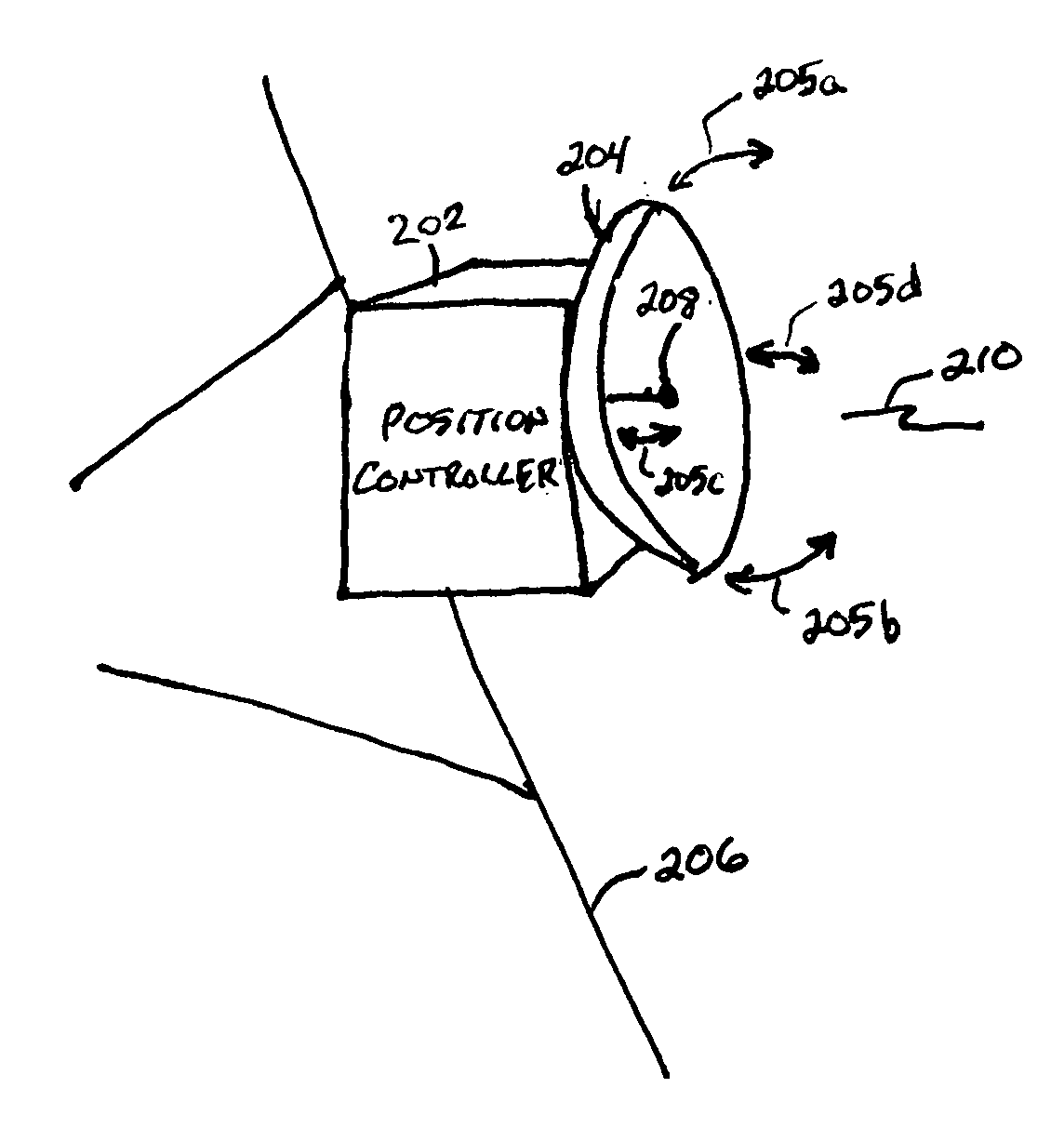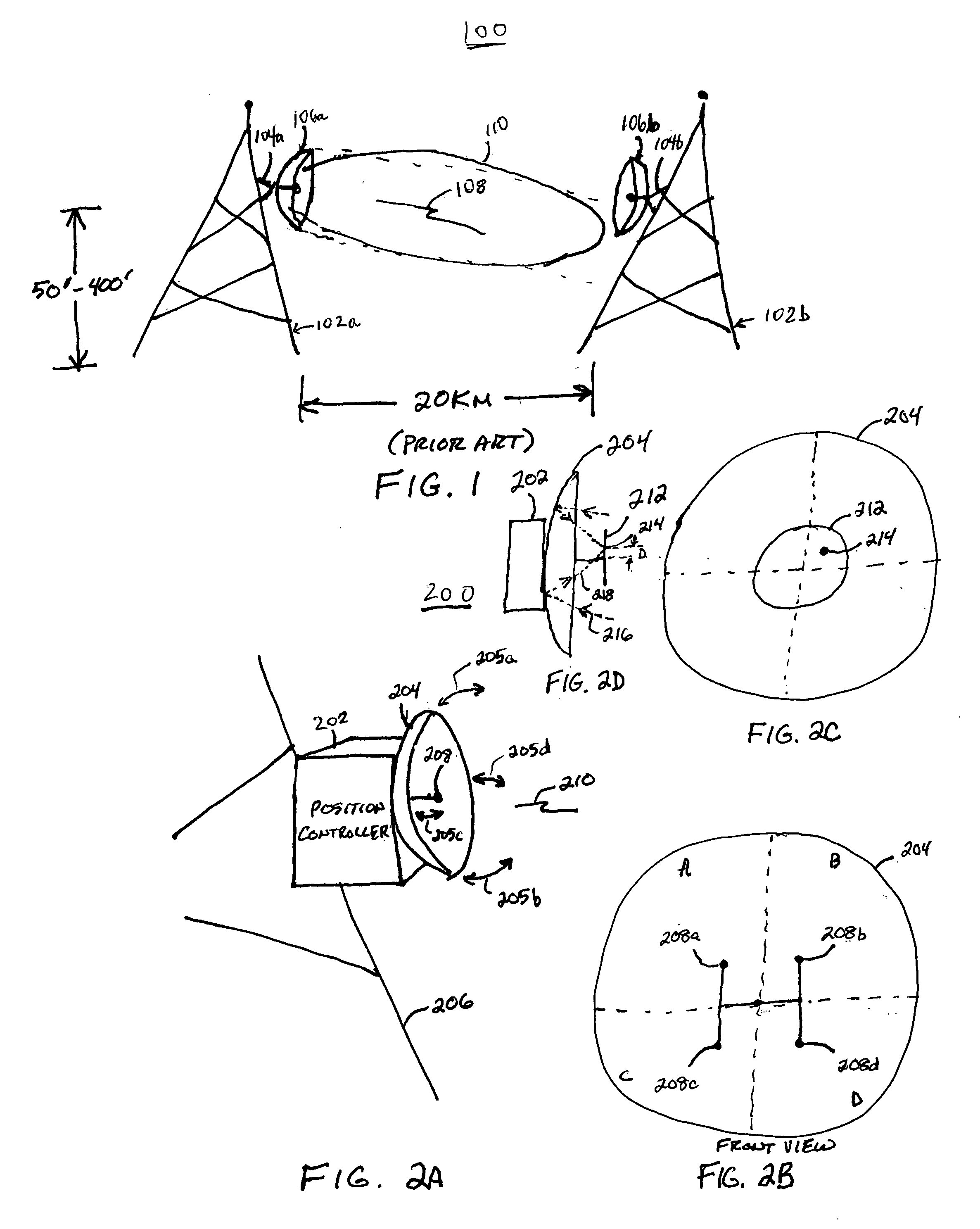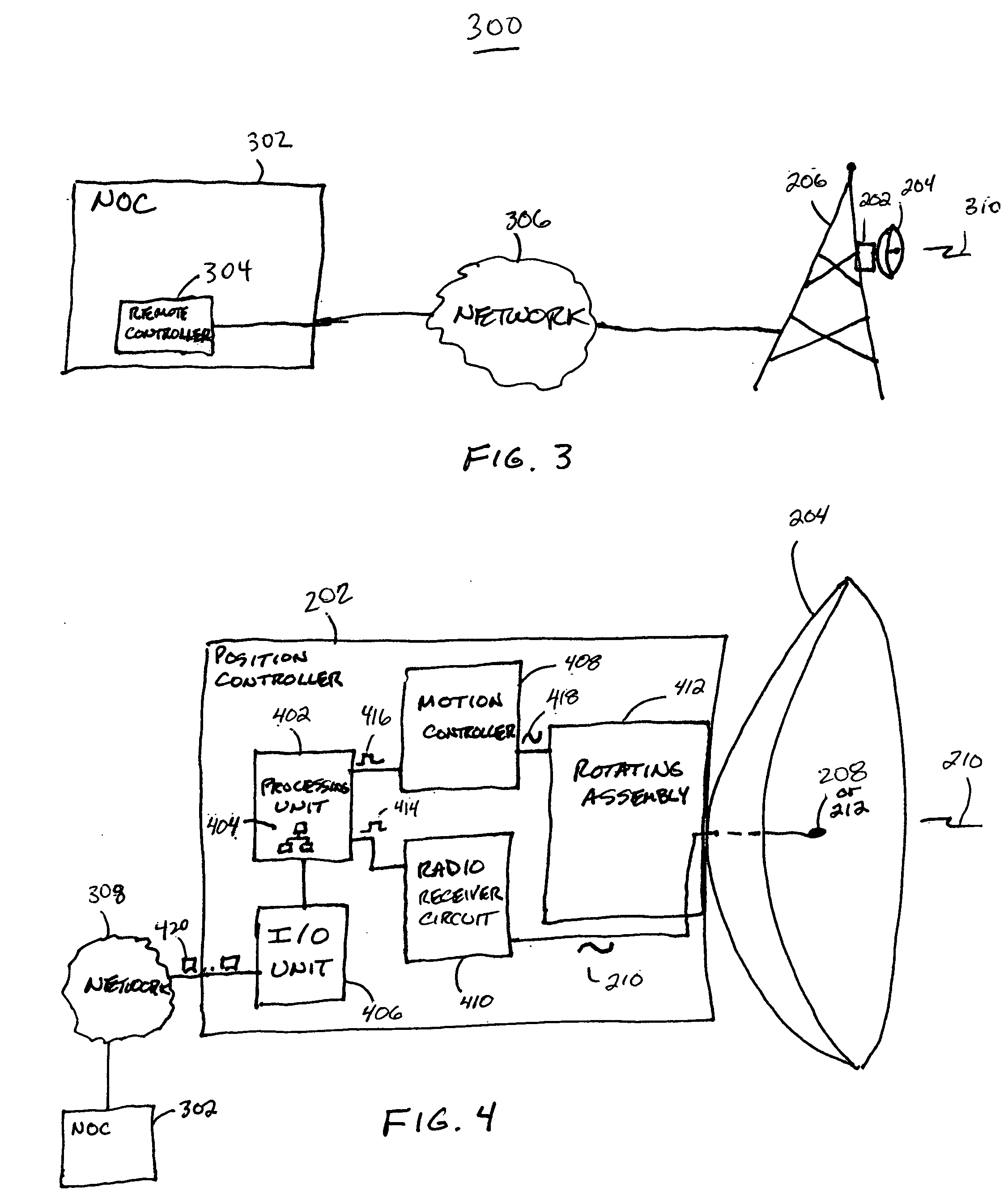System and method for re-aligning antennas
- Summary
- Abstract
- Description
- Claims
- Application Information
AI Technical Summary
Benefits of technology
Problems solved by technology
Method used
Image
Examples
Embodiment Construction
[0025]The principles of the present invention provide a system and method for re-aligning antennas. The description that follows is directed to one or more embodiments, and should not be construed as limiting in nature. In one embodiment, an auto-sensing algorithm is incorporated into a position controller that is attached to an antenna to automatically adjust the elevation and azimuth positions of the antenna. The principles of the present invention may also include a semi-automatic and manual mode for allowing a remote operator to manually adjust the antenna using signal strength or position information returned from a position controller.
[0026]FIG. 2A is an illustration of an exemplary antenna system 200 including a position controller 202 for re-aligning an antenna. The position controller 202 may be configured to rotate the antenna 106 in both the elevation and azimuth directions as depicted by rotation arrows 205a-205d. In one embodiment, the position controller 202 and antenn...
PUM
 Login to View More
Login to View More Abstract
Description
Claims
Application Information
 Login to View More
Login to View More - R&D
- Intellectual Property
- Life Sciences
- Materials
- Tech Scout
- Unparalleled Data Quality
- Higher Quality Content
- 60% Fewer Hallucinations
Browse by: Latest US Patents, China's latest patents, Technical Efficacy Thesaurus, Application Domain, Technology Topic, Popular Technical Reports.
© 2025 PatSnap. All rights reserved.Legal|Privacy policy|Modern Slavery Act Transparency Statement|Sitemap|About US| Contact US: help@patsnap.com



